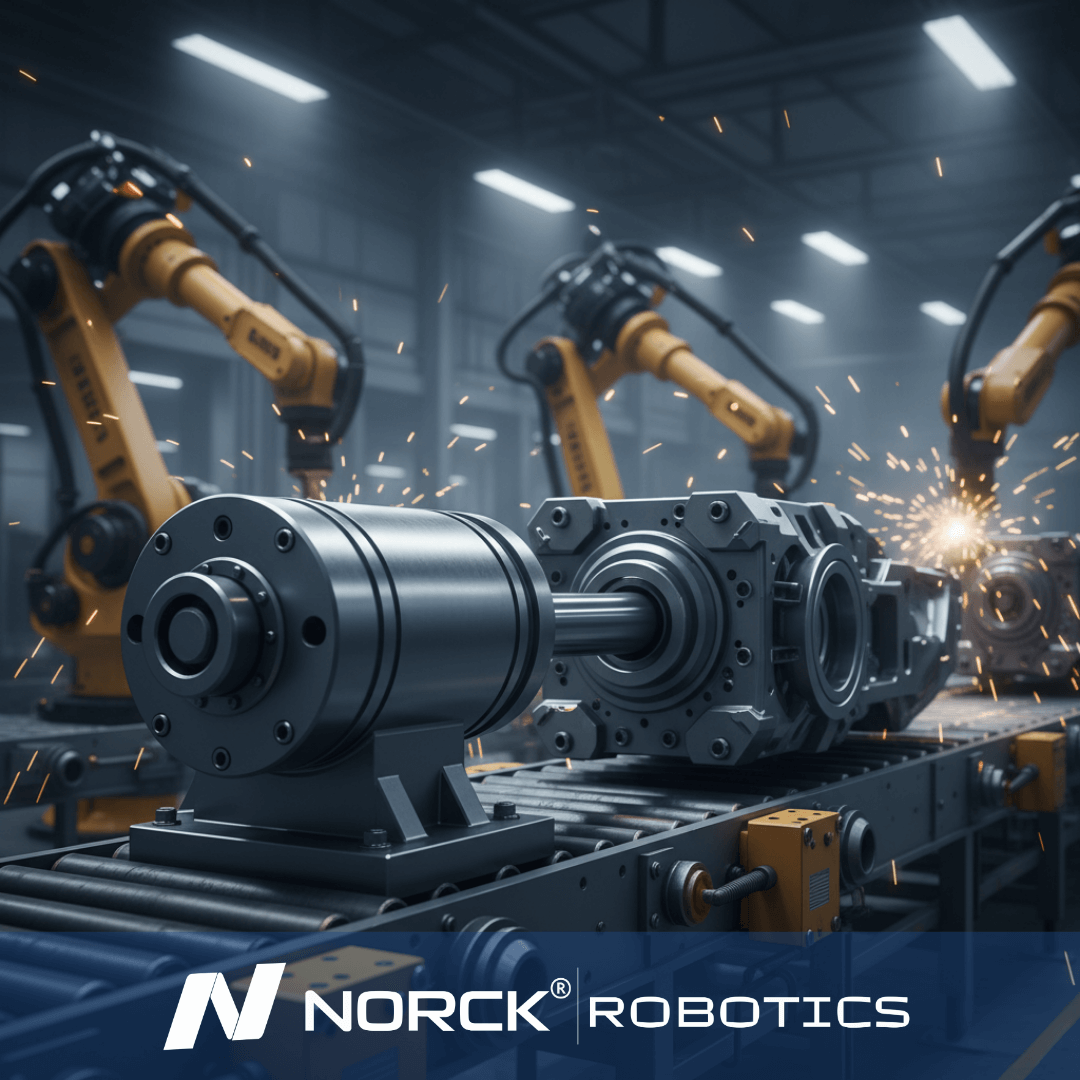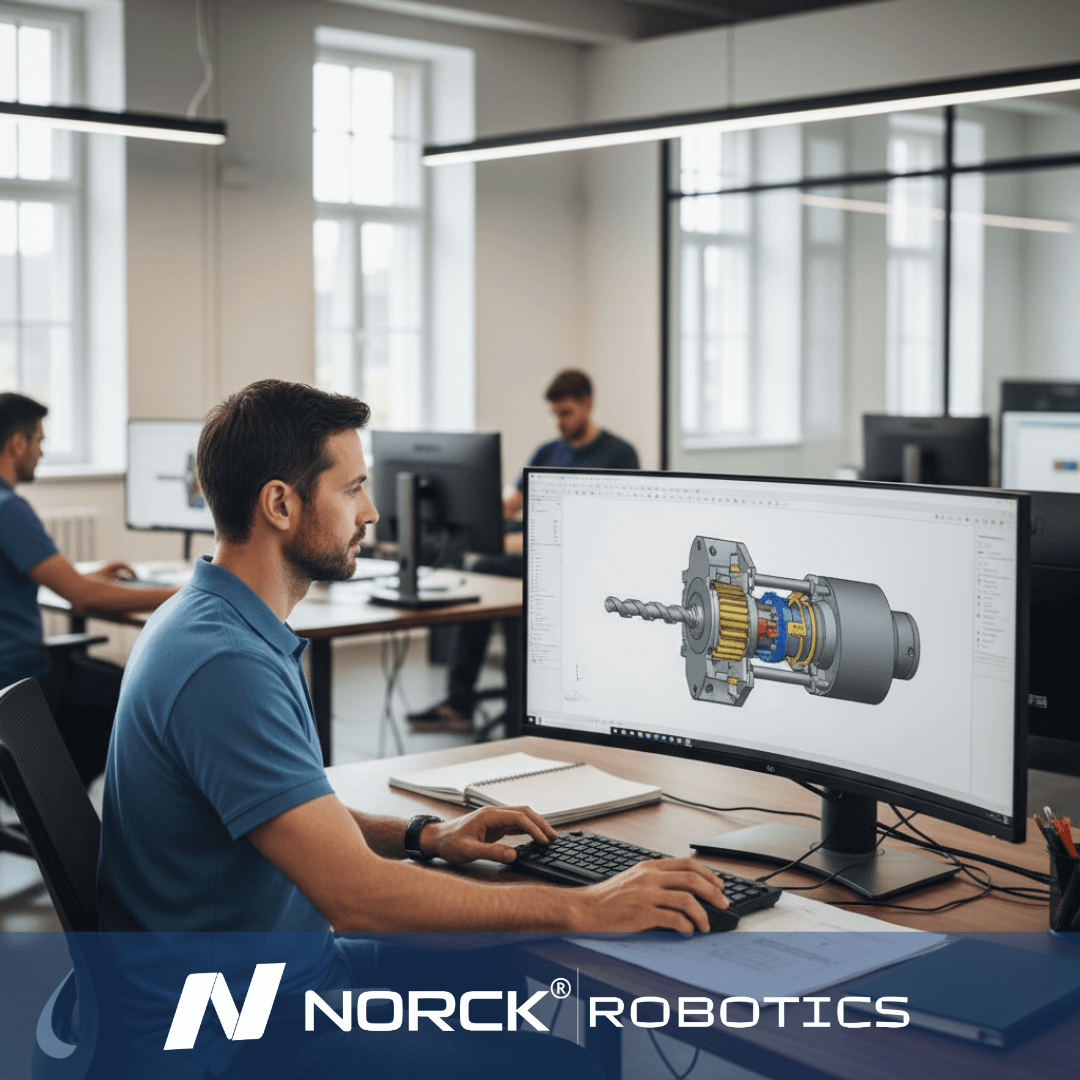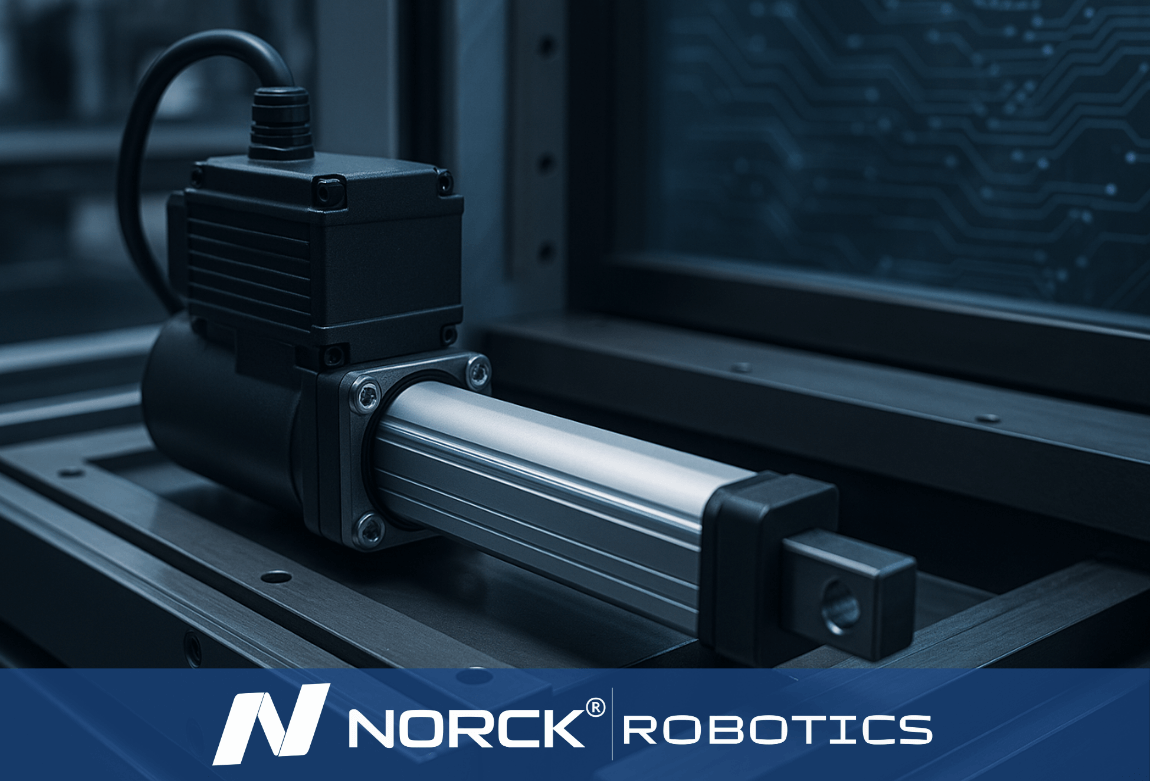In a fastie-faster kind of world that automates everything, linear actuators transform the rotary motion into a controlled and precise linear movement. Set along the production process in factories and on surgical robots, motion is allowed that is necessary either in big-scale operation or fine tuning in small tests. Picking an actuator relevant to one's project entails knowing the difference between micro linear actuators and macro linear actuators.
In this blog post, we put the two classes under a magnifying glass, talk about their applications, and gently nudge you toward a wise choice for the precision linear actuator that suits your application. Whether one works on a small robotic arm or an automated factory line, Norck Robotics is the name that can get you through your decision, Norck Robotics is here to help you make the right decision.

What Are Linear Actuators?
Linear actuators produce motion in a straight line and, therefore, contrast motor-like rotational movement; these have applications aplenty in robotics, aerospace, industrial automation, medical equipment, and home automation.
Various types of linear actuators include electric, pneumatic, and hydraulic ones, but here we will restrict our emphasis on electric precision linear actuators, known for their high accuracy and repeatability. These actuators are further divided into two types: micro- and macro-linear actuators, based on their size, force output, and application.
Micro Linear Actuators
What Are Micro Linear Actuators?
Being compact actuators, micro custom linear actuators are most often employed wherever it is necessary to perform small amounts of force and movement in tight or confined spaces. Micro-linear actuators are suitable for applications that require high-precision and extremely accurate control.
Applications of Macro Linear Actuators
-
Industrial Automation: Conveyors, packaging lines, or pick and place.
-
Aerospace: Controlling wing flaps, landing gear of the aircraft, or cargo bay doors.
-
Construction Machinery: To lift, push, or adjust heavier components, many systems may provide services.
-
Agriculture: Automated irrigation systems and harvesters.
Key Benefits
-
High Load Capacity: Handling heavy objects with the utmost ease.
-
Extended Stroke Lengths: A wider range of motion is covered.
-
Rugged Construction: Designed for harsh industrial environments.
-
Options for Customization: Adjustable for voltage, speed, and force.
Norck Robotics has a rather impressive macro-linear actuator line that is well suited for any application and is designed to perform for a long period of maintainable service life. In industrial automation, whether it's for a machinery assembly line, or to lift heavy panels, these actuators will work really well and reliably.
Micro vs. Macro Linear Actuators: A Side-by-Side Comparison
Feature
Size
Load Capacity
Stroke Length
Precision
Applications
Power Requirements
Cost
Micro Linear Actuators
Small and compact
Low (up to a few kilograms)
Short (typically less than 100mm)
Extremely high
Medical, electronics, robotics
Low
Typically lower
Macro Linear Actuators
Larger and bulkier
High (several hundred kilograms or more)
Long (can exceed 1 meter)
High (but less than micro actuators)
Industrial automation, aerospace
Moderate to high
Typically higher
Size
Micro Linear Actuators
Small and compact
Macro Linear Actuators
Larger and bulkier
Load Capacity
Micro Linear Actuators
Low (up to a few kilograms)
Macro Linear Actuators
High (several hundred kilograms or more)
Stroke Length
Micro Linear Actuators
Short (typically less than 100mm)
Macro Linear Actuators
Long (can exceed 1 meter)
Precision
Micro Linear Actuators
Extremely high
Macro Linear Actuators
High (but less than micro actuators)
Applications
Micro Linear Actuators
Medical, electronics, robotics
Macro Linear Actuators
Industrial automation, aerospace
Power Requirements
Micro Linear Actuators
Low
Macro Linear Actuators
Moderate to high
Cost
Micro Linear Actuators
Typically lower
Macro Linear Actuators
Typically higher
Choosing the Right Linear Actuator for Your Application
When choosing between a micro and a macro linear actuator, consider the following factors:
-
Space Constraints
If the design is compact and space is premium, use a micro actuator. If the design is larger and cumbersome, consider the macro actuators.
-
Load Requirements
How much weight do you have to move? Micro actuators are meant for light applications, while macro actuators handle heavy-duty work.
-
Stroke Length
For long linear travel in the application, the macro actuator is preferred. Where fine short motions are involved, the micro actuators score.
-
Precision and Control
When demanding high precision, say, robotic or medical equipments, precision linear actuators of the micro kind fare well.
-
Environmental Conditions
When it comes to weather, macro actuators are hardy and can brave adverse conditions; micro actuators, on the other hand, are best suited for clean and controlled environments.

Why Choose Norck Robotics?
At Norck Robotics, we've been passionate about providing advanced motion control solutions fitted to specific applications. Whether micro-scale or macro-scale, we have a wide array of precision linear actuators designed around quality, reliability, and innovation.
What Sets Us Apart?
-
Custom Solutions: We engage with clients in creating actuators that perfectly meet their project's requirements.
-
High Performance: Designed for the best performance under actual working conditions.
-
Expert Support: Our motion control professionals are ready to suggest the best possible solution for your actuators.
Choosing Norck Robotics is not just a matter of buying a product but investing in a successful operational partnership.
Conclusion
Most people regard micro linear actuators as little versions of macro linear actuators. However, it is actually much bigger than this-picture-having the right actuator for each single application. Whether it is high precision, load capacity, or environmental durability, knowing what sets a micro actuator apart from a macro actuator will save you precious time, many costs, and engineering headaches.
If you're still pondering which actuator will work best for your project, the experts at Norck Robotics are on hand to assist with their vast product line and know-how to make sure you get the best linear actuator for your particular application.




